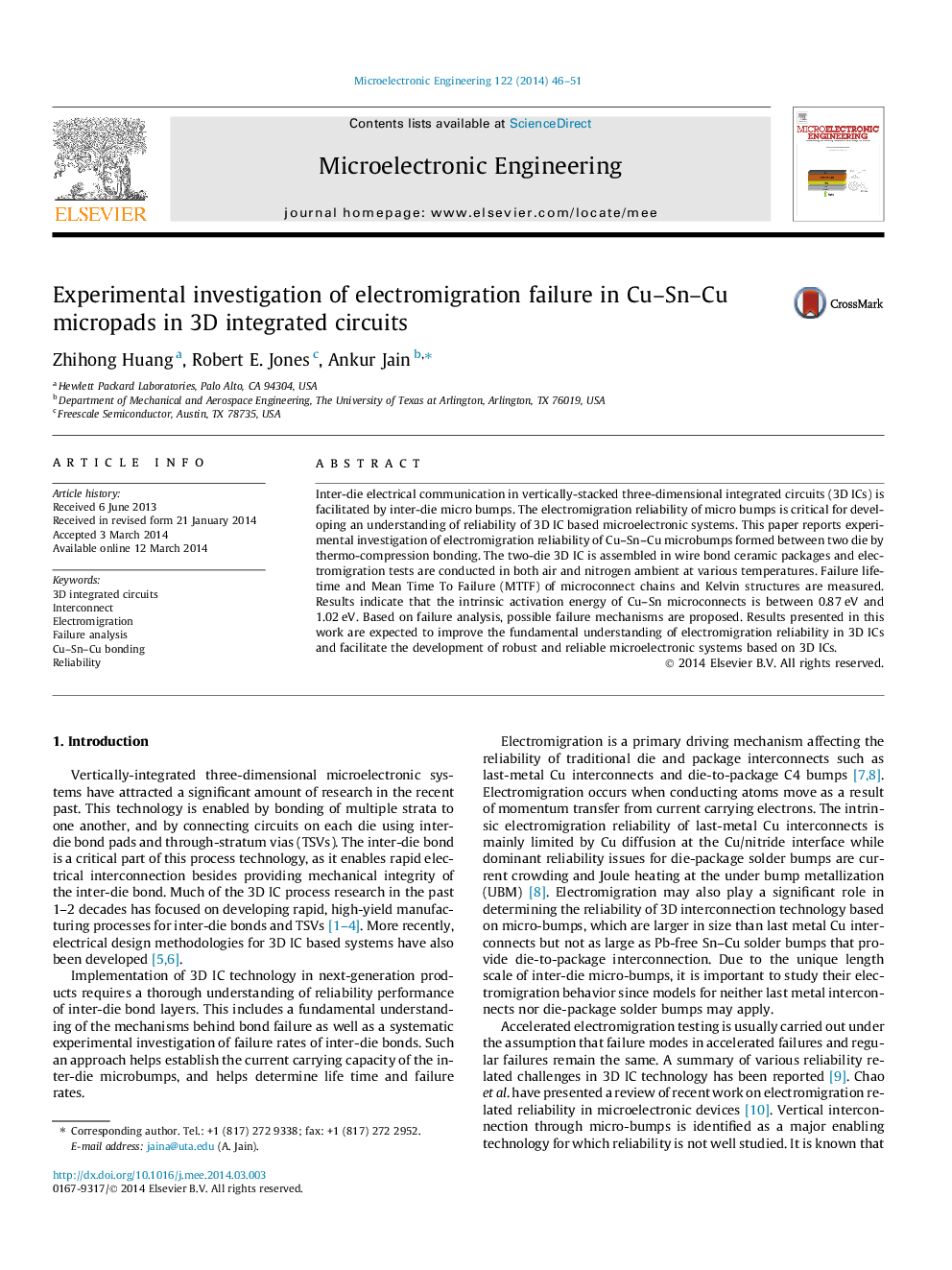| Article ID | Journal | Published Year | Pages | File Type |
|---|---|---|---|---|
| 539472 | Microelectronic Engineering | 2014 | 6 Pages |
•Electromigration in Cu–Sn–Cu microconnects in 3D IC is studied.•Possible failure mechanisms are proposed.•Failed interconnects exhibit voids both in the microconnect and between last metal to microconnect.
Inter-die electrical communication in vertically-stacked three-dimensional integrated circuits (3D ICs) is facilitated by inter-die micro bumps. The electromigration reliability of micro bumps is critical for developing an understanding of reliability of 3D IC based microelectronic systems. This paper reports experimental investigation of electromigration reliability of Cu–Sn–Cu microbumps formed between two die by thermo-compression bonding. The two-die 3D IC is assembled in wire bond ceramic packages and electromigration tests are conducted in both air and nitrogen ambient at various temperatures. Failure lifetime and Mean Time To Failure (MTTF) of microconnect chains and Kelvin structures are measured. Results indicate that the intrinsic activation energy of Cu–Sn microconnects is between 0.87 eV and 1.02 eV. Based on failure analysis, possible failure mechanisms are proposed. Results presented in this work are expected to improve the fundamental understanding of electromigration reliability in 3D ICs and facilitate the development of robust and reliable microelectronic systems based on 3D ICs.
Graphical abstractFigure optionsDownload full-size imageDownload as PowerPoint slide
